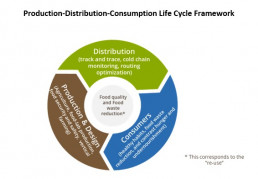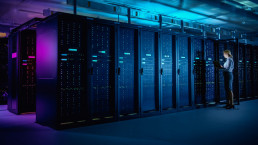Opportunities for Telcos and CSPs in the Satellite World
The satellite world is changing fast. Elon Musk has shown that he can make Low Earth Orbit (LEO) satellite broadband a serious operational success to consumers and his Starlink venture has more than one and half million users and says it is on its way to operational breakeven.
With more than 5,000 spacecraft in orbit as of August 2023 across 100 launches, its success is broadening the attraction of satellite broadband from the niche it was before and is such that it looks likely that Starlink will dominate the satellite broadband arena to the same degree that SpaceX dominates the commercial launcher business.
At the same time work of the 3GPP technical standards group is integrating satellite communications within 5G as LEO satellite systems bring down satellite signal latency to almost the same level as that of terrestrial cellular.
In the earlier satellite world dominated by geostationary operators, European telcos and CSPs could choose to work with regional players such as Eutelsat which were owned mainly neutral local entities.
With Starlink they need to decide whether they want to work with a colourful and unpredictable entrepreneur who is yin to the yang of infrastructure cooperatives on which telcos liked to base their networks before.
Starlink is showing it will move into all the satellite markets its LEO system can provide for – from consumer broadband and serving people in mobile homes and remotely located businesses it is already into maritime service and airliner WiFi with, just as crucially, direct to device {D2D) service looming up soon, where smartphones can communicate directly with LEO satellites. And that’s not to mention military use in Ukraine.
The principal LEO option to Starlink is unlikely to be European. While Europe has one LEO operator, OneWeb, it has much less capacity than Starlink, a higher cost base, and will focus on wholesaling capacity for government and some business applications. A similar approach can be expected from the EU-backed IRIS2 LEO system, still on the drawing board.
Instead, the main LEO competitor will also be one owned by an American billionaire, Jeff Bezos, through his Kuiper system, which is beginning to gear up for service next year. While way behind Starlink, and appearing to target a narrower range of services, Bezos has committed to billions in launches and looks set to challenge Starlink in some services. Its prototype receivers are small enough to be easily portable.
Apple is investing hundreds of millions of dollars in its tie up with Globalstar to offer emergency satellite messaging. This service is already available across much of Europe. Its phone manufacturer rivals are in the process of responding, and this will set in train the move to full voice and data direct smartphone to satellite service (D2D).
The two current potential options in D2D to Starlink are two US-based startups, AST SpaceMobile and Lynk, both fairly long shot ventures which intend to configure their specialised satellites to work with smartphones. The potential revenue from D2D is being hyped in many quarters, but cellular operators still need to offer it, or their rivals will leave them behind.
It will take a few years before full D2D becomes a widespread service, but fixed – or portable – LEO access is already becoming a sizeable business in several countries around the world. In Alaska for instance Starlink is having a major impact on the provision of broadband service as it brings a better satellite service at reasonably affordable prices to outlying places than they ever had on offer before. In Australia, where there are reported to be 120,000 Starlink subscribers, Telstra has incorporated the service into its cellular pay plans.
Starlink already has regulatory approval in 33 European countries, so regional telcos and cellular operators have to decide how they will work with it. Should they play If you can’t beat them, join them, as Telefonica has recently done, deciding to work with Starlink in Spain and its coverage areas in Latin America.
With three cellular operators in most major European markets, those that sign up with Starlink first in each countries are likely to gain an advantage. In the past Musk has not shown himself keen to work with foreign partners, but with Starlink, where he needs to bring foreign markets onstream fast to produce income from otherwise unused satellite capacity, his approach looks different.
More broadly, European telcos need to resolve how they want to be involved themselves in several satellite areas over the new few years, as some other big technological possibilities loom, key among them satellite connectivity for smart driving in vehicles. Do they want satellite to just complement their own networks, or do they want to integrate it within them, for instance incorporating low latency LEO into cellular backhaul. Which use cases do they want to address? They have a lot of local marketing heft, and those with cellular networks retail outlets to sell reception hardware.
The tie-ups telcos decide on now may have a big influence on who they work with later when the business becomes substantial.
Time for all European telcos and CSPs to have a policy in place of what they want to do in including satellite into their service plans for the next few years.
The Impact of Generative AI on the European Future of Work
Adoption of Generative AI by European organizations is growing and will continue to grow in 2023 and beyond. According to IDC’s 2023 Future Enterprise Resiliency and Spending Survey, Wave 5, 20% of European organizations have already made significant investments in Generative AI, while an additional 58% say they are closely looking at the business opportunities the technology has to offer.
Our data from the above survey highlights three areas in which automation and especially Generative AI is already making an impact on European businesses and their workforce:
- GenAI for Skill Shortage Offsetting: As of June 2023, 78% of European companies report that they have deployed or are at least piloting automation technologies to offset labor shortages.
- GenAI as Labor Replacement: 28% of European leaders have already discussed replacing employee positions with automation; 78% plan to replace up to 20% of their workforce with “digital colleagues”.
- GenAI for Employee Augmentation: For those using automation to augment workers (not replace them), generative AI assistants such as ChatGPT, Bard and Copilot paired with data analytics and Project Management tools will be key to improving employee productivity.
Implementing AI driven technology solutions drives operational efficiencies only if they involve the workforce. Employees’ fear of losing jobs to automation is justified because the level of trust between workers and employers on job status has been eroded by companies’ readiness to lay off staff. Therefore, the use of Generative AI within the organization requires education and communication across the organization on what it is, how it will be used, and what its benefits are.
Building trust within your workforce starts with honesty. In most cases, automation will result in job losses, be clear about that. However – organizations that make the most of GenAI limit the number of employees they let go and instead refocus the affected employees into more useful and strategic work.
Many become users of Gen AI who understand the intricacies of newly automated tasks. They can not only capture ways to make automated work more effective but also implement insights to make better and faster decisions and choices. In summary: the implementation of Gen AI will drive work transformation at an exponential pace.
Register for the Webcast: Five Ways to Unlock a Purposeful, Automated Future of Work in EMEA
To successfully manage the cultural impact GenAI will have on your workforce, the following concerns need to be addressed with diligence and ethical integrity:
- GenAI Governance. The greater the depth and breadth of the AI solution, the more important it is to have a governance structure. Test that uses of Gen AI are working correctly, output is dependable and permissible, and the strategy/roadmap is resilient, transparent, and secure. The better the governance model the more employees can trust using their company’s automation tools.
- Change in Employee Roles. An organization’s work model will be affected after the implementation of specific Gen AI use cases. Where possible, employees doing repetitive work should now be shifted to doing more meaningful work. This will mean a reduction in staff, but also an increased need for trained staff supporting new business processes through Gen AI
- Training and Reskilling. The technology expertise required to implement AI tools must be considered in the earliest planning stages. The staff replaced by automation should re-focus on value-added work. This often requires internal upskilling or reskilling to perform more strategic tasks within the organization.
Workforce automation has grown in importance for organizations seeking greater flexibility while providing more meaningful work for employees, reducing costs, providing predictable processes for low value-add tasks, and increasing ROI. Generative AI especially is by no means a magic tool, but it can make a difference when implemented properly.
Taking the time to test out assumptions, pilot relevant use cases, and developing a mid to ling term plan is worth the time. The outcome is a more efficient, effective workplace and engaged workforce.
To fully realize the potential of GenAI, companies need to invest in frameworks which guide talent development and innovative business models that will create value for their customers, as well as their workforce.
Why Should We All Care about Technology in the Food Value Chain?
Complexity of the Issue and Value Chain
“One of the very nicest things about life is the way we must regularly stop whatever it is we are doing and devote our attention to eating.” – said the Italian operatic tenor, Luciano Pavarotti.
Indeed, it is not just about satisfying a primary need, eating is nowadays more and more associated with a healthy and sustainable choice. Along the need-value continuum, the food value chain (FVC) reveals the complexity deriving from the high impact on human-wellbeing, society and the planet, the different sectors involved, without underestimating the intrinsic characteristics of food: meaning highly perishable products, that follow the nature’s life cycle.
In the grocery and restaurant sectors, for instance, the low profit margins of food are counterbalanced by other factors, such as territorial proximity with farmers and producers (Km0), the demographic concentrations and different profiles and nutritional habits of end consumers.
Food quality and safety can be at risk from different “contact points”, uncontrolled used of pesticides and/or antibiotics, cold-chain rupture, cross-contamination, inadequate storage and packaging, improper sanitary practices and international standard, spoiled ingredients, even natural disasters. These will, ultimately, impact consumers’ habits, choices, health, and wellbeing.
Beyond that, food loss and food waste call for supranational social responsibility as a guiding principle with a clear deadline: globally, there is a commitment to halve food waste by 2023.
As the Food and Agriculture Organization of the United Nations (FAO) clearly states on their website, “14% of food valued at an estimated USD400 billion is lost from harvest up to, excluding retail. 17% more is wasted at the retail and consumer levels (UNEP 2021).” Also, in 2022, as part of the “Farm to Fork Strategy”, the EU relaunched the EU Platform on Food Losses and Food Waste (FLW) and aims to operate until 2026.
Scaling Technology in the Value Chain
Leveraging technology to the benefit of safe and security across the food value chain cycle, from production and distribution to the end consumer, to ensure food quality, products traceability, and healthy habits while lowering food waste for a sustainable economic, social and environmental ecosystem is possible if the right technologies are implemented in the right way.
Circularity is intrinsically embedded in the production-distribution-consumption life cycle framework while technology, and in some cases ethic, can be applied across the different processes of the food supply chain: from production, through distribution, to the final consumer with the aim to control and, ultimately, eliminate food waste and losses.
Challenges of the Food Supply Chain’s Core Process
Leveraging the competencies and industries’ key trends, we have identified the top challenges that businesses and institutions need to consider:
Production & Design
Fresh products (fruits, vegetables, etc.) provenance intersects with different sectors, from agriculture and manufacturing to large scale food retail trade and stores. At the same time, the use of unusual ingredients, as insects, as well as the production of lab-grown food from cellular agriculture and genetically modified crops/livestock raise questions around the sustainability of methods used, such as maintaining freshness of products and ensuring traceability.
Climate change and increasing urbanization are also important challenges affecting the availability and productivity of farmland. This might have severe impacts on food security and overall quality of life.
Distribution
Track and trace perishable items, assuring the integrity of the cold chain are critical use cases for guaranteeing food safety and provenance. The establishment of food control systems is essential to maintain a safe and trustworthy food supply, protect public health, and ensure consumer confidence in the food they consume.
Strengthening collaboration between producers and retailers to enhance transparency while assuring confidentiality on food shelf life is crucial in achieving these goals.
Consumption
Food waste, food surplus management in the consumer industry includes food and grocery stores as well as restaurants and coffee shops. In most cases, food packaging is associated with shelf-life monitoring for disposing what have not been sold or just reducing or re-using certain food packages.
Also, food security, food safety and healthy nutrition need to be compliant with existing regulations, such as the European General Food Law Regulation, and agencies, such as the European Food Safety Authority (EFSA).
Where Can Technology Help
The field of food production is in constant development, seeking for innovative approaches and technologies to produce food more efficiently, distributing focused on the reduction of losses and do consume in a way that privileges the health of consumers and waste minimizing. Here we highlight the technologies employed in the three core processes along the food value chain:
Production & Design
Computer vision for field monitoring, IoT in agricultural devices and equipment to the internet for real-time monitoring and data collection, enabling farmers to make data-driven decisions, agrivoltaics to provide protection from environmental extreme events. Also, other technologies playing a role in food production are vertical farming and controlled environment food production, using artificial lighting and climate control to maximize production in limited spaces and reduce the environmental impact.
Robotics is automating tasks such as planting, harvesting, sorting, and packaging, reducing labor costs and increasing overall efficiency.
Distribution
Eco-friendly and biodegradable materials to replace traditional plastic packaging, enabling a circular approach to food packaging. Tracking, tracing and monitoring technology into food packaging to ensure freshness, temperature, and shelf life, extending the product’s longevity. IoT sensors providing for real-time monitoring of temperature, humidity, and other environmental factors during transportation and storage, ensuring food quality and safety.
Artificial intelligence and machine learning algorithms to optimize supply chain logistics, inventory management, and demand forecasting. Moreover, autonomous delivery vehicles and drones are being tested for last-mile delivery of food products, which has the potential to reduce delivery times and costs.
Consumption
AI-enabled prediction of retail shelf-life for food to mobile-friendly technologies that allows customers to buy and collect food boxes from cafés, restaurants, hotels, shops and manufacturers that otherwise would go to waste, but are still under the expiration date. On the food safety side, advanced food testing methods, pathogen detection using AI and optical recognition, and food traceability systems to identify and prevent contamination issues.
Mobile apps, NFC and QR codes on packaging were being used to provide consumers with detailed product information, including sourcing, certifications, and nutritional data.
This all encompasses a continuous spectrum of need and value within the food sector, where the intricacies of the food value chain (FVC) are illuminated, showcasing their profound impact on human well-being, society, and the environment, involving various sectors, and acknowledging the inherent complexities of food itself. Simultaneously, food quality and safety face vulnerabilities from multiple “contact points,” including unchecked pesticide or antibiotic usage, disruptions in the cold chain, cross-contamination risks, inadequate storage and packaging, improper hygiene practices, international standards compliance, spoiled ingredients, and even natural disasters.
Furthermore, addressing food loss and waste necessitates a global social responsibility commitment, aiming to cut food waste in half. To solve for those complex challenges, the field of food production, consumption, and distribution, must continually evolve exploring innovative approaches and technologies that enhance the efficiency of processes at the same time create a new industry based off the interactions of the food value chain (FVC) stakeholders. AI & machine learning, IoT sensors, robotics, and even data & analytics are the service of a more productive, higher quality, healthier food ecosystem.
If you want to know more about the cross-industry research, access the European Verticals: Use Cases and Strategies
Mainframe Applications: 5 Tips for Navigating the Tightrope Between Tradition and Transformation
Mainframes are a staple of the European enterprise. They’re reliable, powerful, have been around for decades, and many organizations continue to use them for their most crucial business functions. Mainframe apps are common among information-intensive industries areas such as banking, government, healthcare, insurance, or utilities.
With the rise of new technologies like the cloud and low-cost servers, many predicted the mainframe’s demise. But guess what? It’s still alive and kicking, and here’s why.
Unmatched Performance: Mainframes excel at high-speed transaction processing. They handle enormous volumes of transactions swiftly and cost-effectively. This is why banks rely on them for core operations. Transactions like credit card processing and ATM withdrawals happen seamlessly, thanks to mainframes. They’re also the power behind those overnight batch runs for processing customer statements and reports.
Data Handling Prowess: Mainframes have the muscle to handle multiple terabytes of data effortlessly – the capability is vital in sectors like government, healthcare, or insurance.
Ability to Adopt: YES! Mainframes have adapted to stay relevant. Once bound to COBOL and proprietary OS, they now embrace modern programming languages like Python, Java, JavaScript, and C++. This multilingual flexibility allows them to use sophisticated tools from the x86 server world.
AI and Machine Learning: With support for languages like Scala, Python, TensorFlow, and Apache SparkML, they make interesting hosts for machine learning. It has become possible to integrate valuable mainframe data with analytics platforms, eliminating the need for data off-loading.
Security Supremacy: Mainframes rule when it comes to security. Their processing power allows for high end-to-end encryption without performance sacrifices.
So, if they are perfect, why aren’t they? Because they can also become very expensive to maintain, and often just can’t keep up with the demands of the modern world.
That’s why more and more European organizations are modernizing their mainframe applications. Skillfully done, modernization offers all the benefits of a mainframe without the drawbacks. It can help you with:
Saving cost: Maintaining mainframes isn’t cheap. There are hardware, software, and skilled personnel costs. Modernization might seem like a costly adventure, but it actually leads to significant savings in the long run.
Improving scalability and agility: Mainframes aren’t inherently scalable, which is a problem in today’s ever-changing business landscape. Migrating to new platforms allows for easier scaling and adaptation to shifting workloads.
Enhancing integration: Mainframes often use legacy technologies that make integration with modern systems and cloud services a headache. Modernization lets you embrace agile development methodologies, microservices, and containerization, making it easier to adapt and release new features.
Attracting talent: As older IT professionals retire; mainframe expertise is becoming scarcer. Modern technologies attract a larger talent pool, making it easier to find skilled professionals for modernized systems. And it is easier to maintain necessary apps.
Improving UX: Users expect web-based interfaces, mobile compatibility, and responsive design.
Mainframes struggle with this, but modernization can provide a competitive edge by improving the user experience. And modernization doesn’t have to be painful. Here are a few tips to make your mainframe modernization journey if not fun, then surely more painless:
- Start small: Don’t try to modernize everything at once. Start with a few key elements and then gradually work your way to the rest.
- Get help from a trusted partner: There are several companies that specialize in mainframe modernization. They can help you assess your needs, develop a plan, and execute the migration.
- Do your research: There are a lot of different mainframe modernization options available. Do your research and choose the one that’s right for you, but be creative, don’t be afraid to think outside the box and come up with your own approach.
- Set realistic expectations: Modernization is a complex process. Don’t expect it to happen overnight.
- Be patient: There will be challenges along the way. Be patient and don’t give up.
Will there be challenges? There will be. Modernization can be a costly undertaking, but it’s important to remember that the cost of not modernizing can be even higher. Modernization is a complex process that requires careful planning and execution. There is always some risk involved in any major IT project. Modernization is no exception. And surely, there is a shortage of skilled professionals with the knowledge and experience to modernize mainframe applications.
Mainframe applications are here to stay, but modernization is essential for staying competitive in today’s digital era. Whether you choose to recompile with emulators, migrate gradually, focus on component-level changes, or opt for lifting and shifting, the key is to adapt while preserving what makes mainframes valuable.
To see how European organizations approach mainframe apps modernizations, please read:
To see what it means for service providers, please read:














